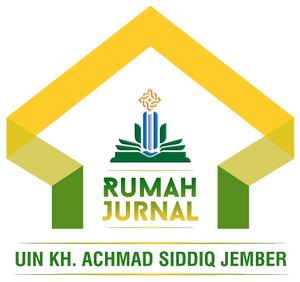Religious Music as a Medium of Da'wah Hadith Perspective: Case Study of Alma Voice at Al-Mawaddah Islamic Boarding School
DOI:
https://doi.org/10.35719/ijibs.54Da'wah is the process of conveying Islamic teachings to the public through various methods adapted to the times. One contemporary medium used in da'wah is religious music. Music functions not only as entertainment but also as a means to deliver moral and Islamic messages. In Islamic boarding schools (pesantren), religious music has become an innovative form of da'wah that effectively attracts public attention, especially among the younger generation. This study aims to explore the role of religious music as a da'wah medium from the perspective of Hadith, using a case study of Alma Voice, a religious music group from Al-Mawaddah Islamic Boarding School for Girls in Ponorogo. This research uses a qualitative method with a descriptive-analytical approach, combining literature review of Hadiths related to music and art with field observations of da'wah practices carried out by Alma Voice. The findings show that Alma Voice uses music to spread Islamic values through lyrics that promote love for the Prophet Muhammad, encourage piety, and strengthen Islamic brotherhood (ukhuwah Islamiyah). From the Hadith perspective, music is permissible as a means of da'wah as long as it does not contain elements contrary to Islamic law. This study concludes that religious music can be an effective communication tool for da'wah within the pesantren context when aligned with Qur'anic and Hadith-based values.
References
Alkan, Ahmed. “"Music In Islamic Jurisprudence: Issues And Proposed Solutions.” Academic Scientific Research : Nordic International University, 2024. https://doi.org/ 10.5281/zenodo.14377576
Huang, Jenny, Christoph Johannes Weber, and Sylvia Rothe. “An AI-Driven Music Visualization System for Generating Meaningful Audio-Responsive Visuals in Real-Time.” IMX 2025 - Proceedings of the 2025 ACM International Conference on Interactive Media Experiences 1, no. 1 (2025): 258–74. https://doi.org/10.1145/3706370.3727869
Hermina, D. (2015). Strategi Pelaksanaan Pengarusutamaan Gender (PUG) dalam Pendidikan. Muadalah, 2(1). https://doi.org/10.18592/jsga.v2i1.459
Imam Syafiq Arrizal, Abu Yazid al-Bustomi, & Naufal Robbiqis Dwi Asta. (2025). Islam Progresif Abdullah Saeed Dan Relevansinya Terhadap Isu Gender Dan Ekologi di Indonesia. Millatuna: Jurnal Studi Islam, 2(01), 176–192. https://doi.org/10.33752/mjsi.v2i01.8203
Ibnu Azka, Sairatun Nida, Agam Muhammad Rizki, Fathur Baldan Haramain. “Fatwa In The Digital Era : Communication Strategy Of The Mui In Disseminating The Uang Panai’ Fatwa In South Sulawesi.” Al-Qalam Jurnal Penelitian Agama Dan Sosial Budaya 30, no. 1 (2024): 1–12. https://doi.org/10.31969/alq.v30i1.1366
Ibnu Azka, Siti Nurhalisa, Fathur Baldan Haramain. “Developing Strategy for Young Da’i : Da’wah Education at the Nadhatul Ulum Islamic Boarding School.” International Journal of Islamic Boarding School 2, no. 1 (2024): 21–38. https://doi.org/10.35719/ijibs.v2i1.39
Ibnu Azka, Siti Suleha. “Transformasi Moral : Strategi Progresif Lembaga Dakwah Nurut Tarbiyah Dalam Membina Akhlak Siswa Di SMA 2 Negeri Gowa.” Nalar : Pendidikan Dan Kebudayaan 2 (2023): 88–95. https://doi.org/10.31004/aulad.vxix.xx.
Jähnichen, Prof Gisa. “Al- Gahazali ’ s Thoughts on the Effects of Music and Singing upon the Heart and the Body and Their Impact on Present-Day Malaysian Society.” International Journal of Humanities and Social Science 2, no. 9 (2012): 115–23. https://www.ijhssnet.com/journals/Vol_2_No_9_May_2012/11.pdf
Karimullah, Suud Sarim. “The Use of Music in Islamic Da’wah and Its Impact on Audience Emotional Response.” Jurnal Ilmu Dakwah 44, no. 2 (2024): 224. https://doi.org/https://doi.org/10.21580/jid.v44.2.20293.
Kholili, M., Ahmad Izudin, and Muhammad Lutfi Hakim. “Islamic Proselytizing in Digital Religion in Indonesia: The Challenges of Broadcasting Regulation.” Cogent Social Sciences 10, no. 1 (2024). https://doi.org/10.1080/23311886.2024.2357460.
Mahmud, Amir. “Musik Antara Halal Dan Haram.” MAFHUM: Jurnal Al-Qur’an Dan Tafsir 2, no. 2 (2017): 1–34. http://yudharta.ac.id/jurnal/index.php/mafhum.
Pratiwi, Hanameyra. “Analisis Sanad Dan Matan Hadis Tentang Musik.” Jurnal Riset Agama 1, no. April (2021): 59–70. https://doi.org/10.15575/jra.v1i1.14256
Raja Fahrul Reza, Irfan. “Mediatisasi Hadis Melalui Musik Sebagai Sarana Dakwah Dalam Kanal Youtube Gontor TV.” Al-Qudwah : Jurnal Studi Al-Qur’an Dan Hadis 2, no. 2 (2024): 152–71. http://dx.doi.org/10.24014/alqudwah.v2i2.29376
Rakhmat, Jalaluddin. Psikologi Komunikasi. Remaja Rosdakarya, 2001.
Rasmussen, Anne K. “The Qur ’ an in Indonesian Daily Life : The Public Project of Musical Oratory.” Ethnomusicology 1, no. 1 (2001): 30–57. http://dx.doi.org/10.2307/852633
Refi Nur Alifah, Risnu Al-Kahfi, Rengki Poldin Polansah, Afifah Putri Nurisma, Ayu Humairoh. “Musik Dan Nyanyian Dalam Perspektif Hadis.” Taqrib : Journal of Islamic Studies 2, no. 1 (2024): 42–50. https://doi.org/10.61994/taqrib.v2i1.600
Seixas, Santos, U C Hngv, Junheya Francisca, De Jesus Belo, M G Fmcs Untl, Domingos Jose, Paulo Henriques, and Cfjj Mj. “The Literature Depth Review on the Study Design in Qualitative Research Methodology.” American Journal of Medical and Clinical Research & Reviews 4, no. 4 (2025): 1–10. https://doi.org/10.58372/2835-6276.1288
Yusuf al-Qaradawi. Islamic Awakening Between Rejection and Extremism. International Institute of Islamic Thought, 2006. https://doi.org/10.2307/j.ctvkc67k3
Downloads
Published
Issue
Section
License
Copyright (c) 2025 Nur Izzah Islamy, Ibnu Azka, Fathur Baldan Haramain

This work is licensed under a Creative Commons Attribution-NonCommercial 4.0 International License.
License
1. Author’s Warranties
The author warrants that the article is original, written by stated author/s, has not been published before, contains no unlawful statements, does not infringe the rights of others, is subject to copyright that is vested exclusively in the author and free of any third party rights, and that any necessary written permissions to quote from other sources have been obtained by the author(s).
2. Miscellaneous
IJIBS will publish the article (or have it published) in the journal if its editorial process is successfully completed and IJIBS or its sublicensee has become obligated to publish it. IJIBS may conform the article to a style of punctuation, spelling, capitalization, and usage that it deems appropriate.
















 IJIBS licensed under Creative Commons Attribution-NonCommercial 4.0 International License.
IJIBS licensed under Creative Commons Attribution-NonCommercial 4.0 International License.